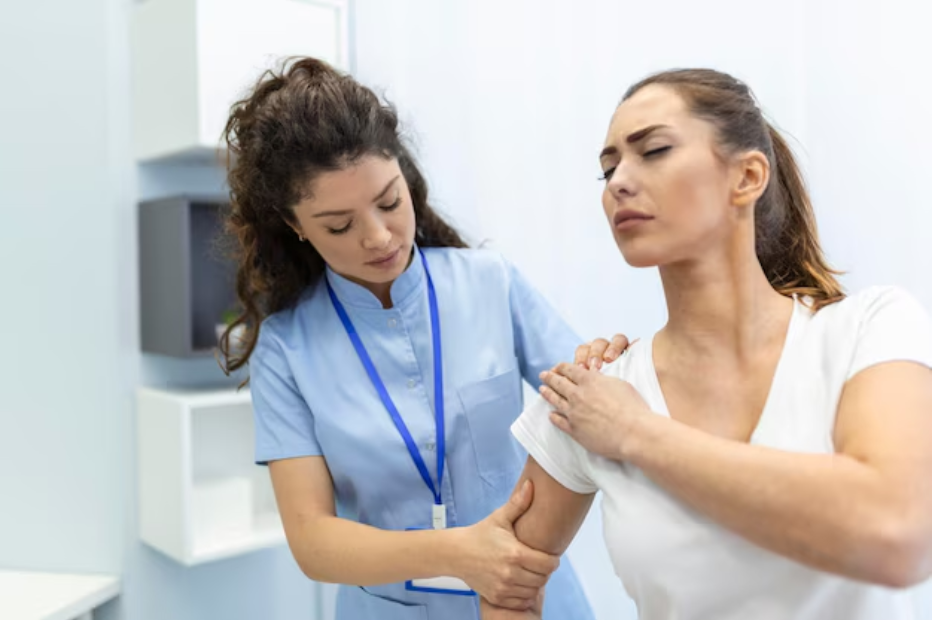
If you’ve ever experienced an abrupt sharp discomfort in your calf muscles while running, walking or even going up stairs, you may have been suffering from calf strain. It happens when the muscles in your calf are stretched out or injured due to abrupt movement, a lack of warming up, or excessive use. Although it may be stressful however the positive side is that with proper care and rehabilitation, recovery is likely.
We’ll discuss the ways that physiotherapists play an important part in calf strain treatment in Noida and recovery, and also why visiting a professional such as Aceso Physiotherapy in Noida can be the most beneficial.
Understanding Calf Strain
The calf muscles are made by two muscles – the gastrocnemius as well as the soleus. A tear or strain could be caused by these muscles being stretched beyond their limits. The most frequent causes are:
- Running or sprinting that is intense
- Sudden twisting or jumping
- Uneven surfaces or shoes
- The inability to stretch before exercising
A calf strain can result in:
- A sharp pain radiating from the rear of the leg
- The swelling or the bruising
- It is difficult to walk or stand on your toes
If you’re looking for a strained calf muscle doctor in Noida, consulting an physiotherapist is among the best initial steps.
Why Physiotherapy is Important in Calf Strain Treatment
In terms of calf muscle tear treatment in Noida, physiotherapy is not only about relieving pain, but also about the safe recuperation and preventing injuries in the future. This is how a physiotherapist aids
1. Accurate Assessment
A physiotherapist from Aceso Physiotherapy will carefully assess the severity of your calf muscle strain by taking a thorough physical exam and a detailed history. This will ensure that you receive an individual treatment plan instead of a standard treatment.
2. Pain Management Techniques
The physiotherapists utilize gentle treatments such as ice or ultrasound as well as manual techniques to ease swelling and pain during the beginning phase.
3. Guided Exercises
The importance of exercise is the recovery of calf strain. However, wrong exercises can cause the problem. A calf strain recovery therapist in Noida will help you with a series of stretch and strength exercises that increase flexibility and mobility.
4. Preventing Recurrence
One of the primary functions of physiotherapy is teaching the correct posture, warming-up exercises and strengthening exercises to stop the possibility of calf strains occurring repeatedly.
Role of Aceso Physiotherapy in Calf Strain Recovery
If you are looking for physiotherapy for calf strain in Noida, you require an establishment that can combine the expertise of a specialist with individualized care. Aceso Physiotherapy is a standout.
At Aceso the therapists here do more than just treat your calf strain; they concentrate on your overall wellbeing. The treatment they offer is based on:
- An in-depth evaluation of the injury
- A personalized recovery program designed to help you get quicker healing
- Monitoring of progress on a regular basis
- Guidelines for activity and lifestyle to prevent injury recurrence
If you’re an athlete suffering from tears in your calf muscles or you’re dealing with an unexpected strain, the professionals at Aceso offer safe and efficient treatments for calf muscles tear in Noida.
Recovery Timeline for Calf Strain
The extent of recovery depends on the extent of strain:
- Mild Strain (Grade 1): 1 – 2 weeks
- Moderate Strain (Grade 2): 3- 6 weeks
- Severe tear (Grade 3): 2 months or more
With expert care provided by Aceso Physiotherapy, Patients often get faster and better results as compared to self-treatment.
When to See a Physiotherapist
It is important to seek assistance from a strained calf muscles doctor in Noida if you experience:
- The pain is sudden and sharp in the calves
- The appearance of bruising or swelling
- It is difficult to walk or stand on your toes
- Injuries to the calf repeatedly